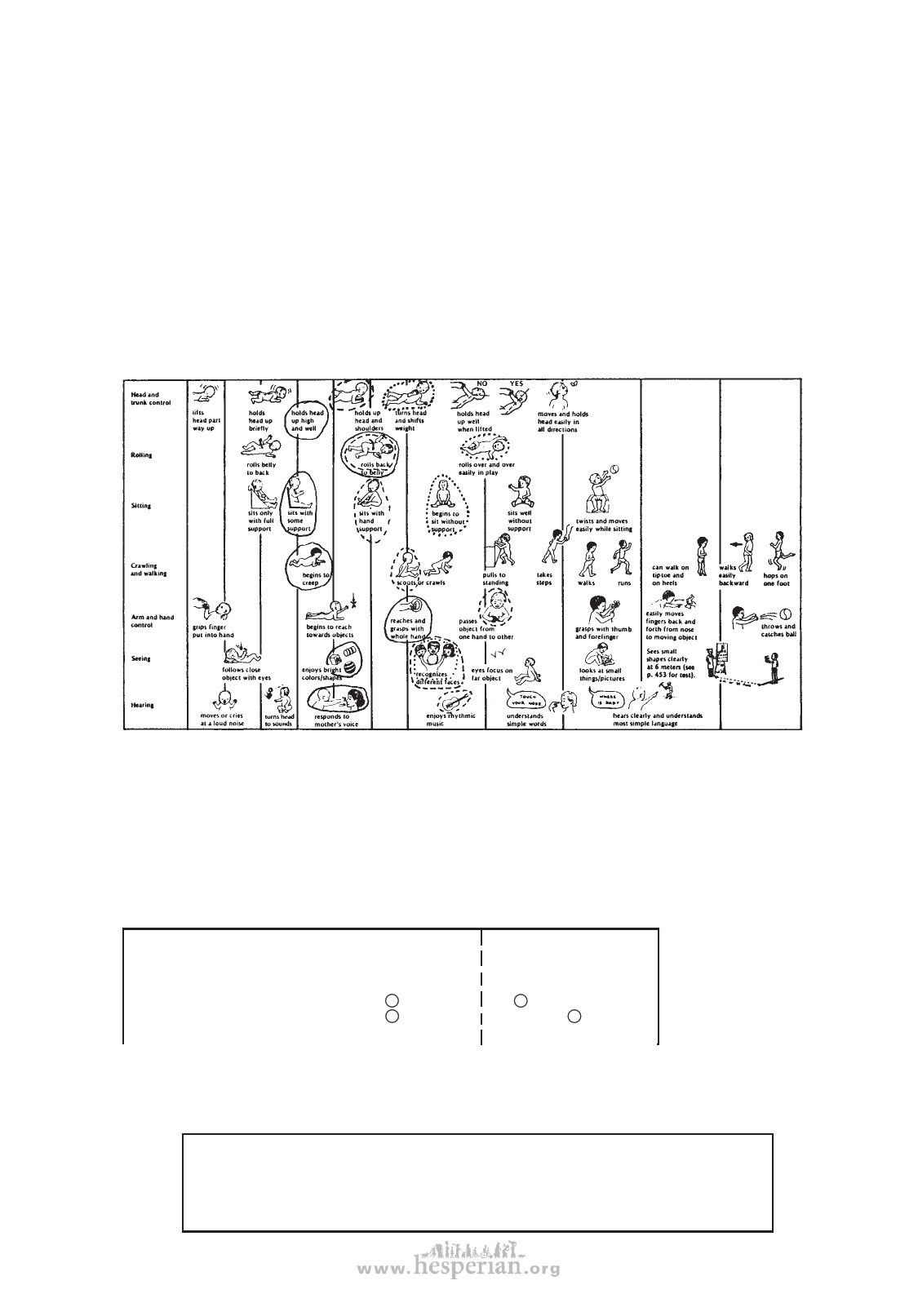
FLEXIKIN 49
EVALUATING THE PROGRESS OF THE WHOLE CHILD
A simple way for rehabilitation workers and parents to evaluate how a child is progressing
as a whole is to keep a record of her ability to do different things. Each month, or during each
visit to the community rehabilitation center, the child’s different abilities are reviewed, tested,
or observed. Any changes are recorded.
For children under 5 years old, one way of evaluating a child’s development is to use
the RECORD SHEET 6 (p. 292). This chart shows the developmental levels (‘milestones’)
for different skills and activities. The first time the child is evaluated, circle the drawing that
shows what the child can do in each area.
Each time the child is evaluated, on the same sheet, again circle the appropriate drawing,
but use a different color (or a dotted, dashed, or zigzag line). This way, you can see where
the child is moving ahead well and where he is behind.
For evaluating the progress of children over age 5, the charts on the next page may
help. Two different approaches are used. Chart A is more objective (requires less personal
judgment or opinion) but does not allow for small improvements. Chart B is more subjective
(is based more on personal judgments). It considers quality of improvement, not just
quantity. You can try both and see which you think gives truer, more useful results.
To use Chart A: For each skill, circle whether the child can do it “without help,’ “with a
little help,” or “with lots of help.” Add all the numbers you circle. Compare the scores of the
first and second visits. For example:
How does the child eat?
How does the child drink?
First visit
without little lots of
help help help
4 20
4 20
Second visit
without
help
4
4
little
help
2
2
lots
of
help
0
0
Here we see
the child has
improved his
eating skills but
not his drinking
skills.
To use Chart B: In each area, on the second visit, circle whether the child is doing a lot
better, a little better, or the same. Add it all up. The higher the score, the more the child has
improved.
NOTE: We question whether the use of numbers may not be misleading.
But we think the questions themselves may be a useful guideline. None of
these evaluation forms will show all areas of change or improvement. They
are not substitutes for detailed notes, drawings, and a good memory!
disabled village children